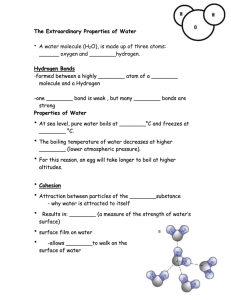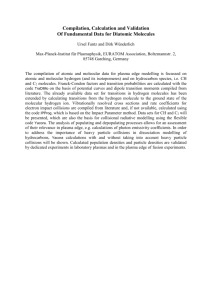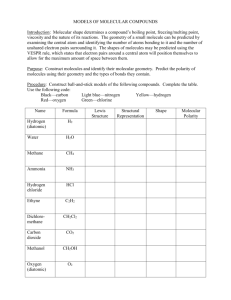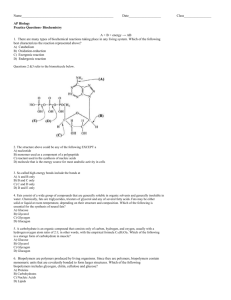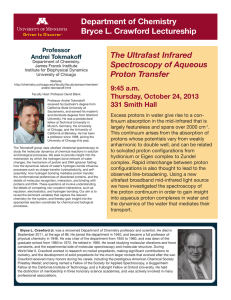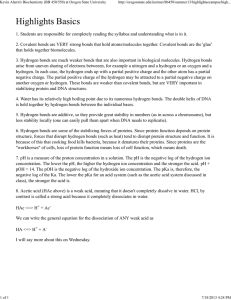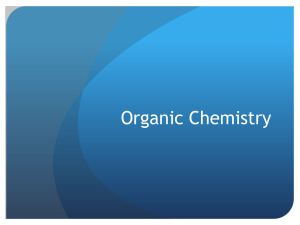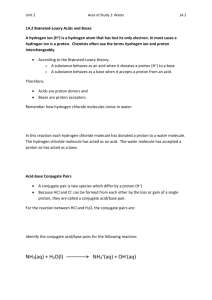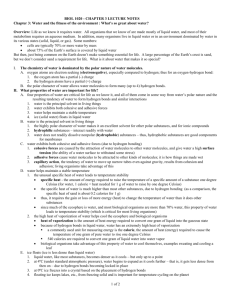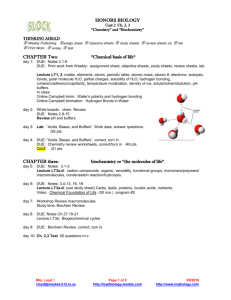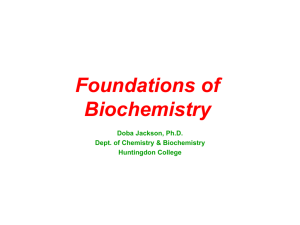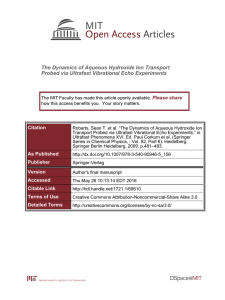THE ROLE OF HYDROGEN BONDING IN THE MOLECULAR
advertisement
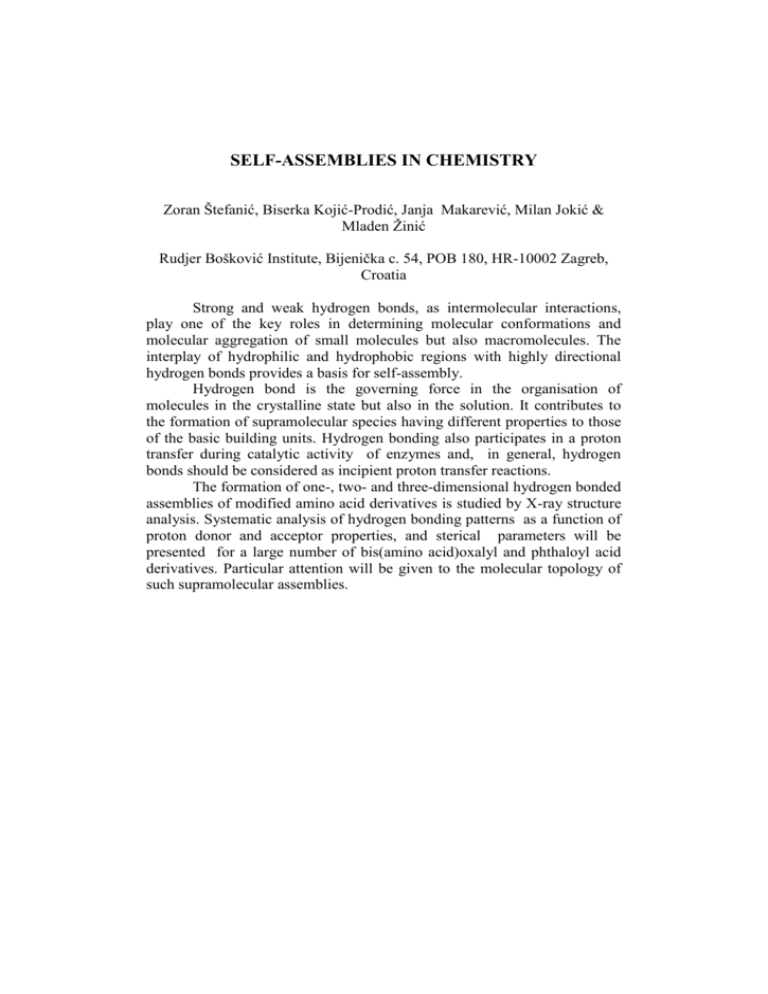
SELF-ASSEMBLIES IN CHEMISTRY Zoran Štefanić, Biserka Kojić-Prodić, Janja Makarević, Milan Jokić & Mladen Žinić Rudjer Bošković Institute, Bijenička c. 54, POB 180, HR-10002 Zagreb, Croatia Strong and weak hydrogen bonds, as intermolecular interactions, play one of the key roles in determining molecular conformations and molecular aggregation of small molecules but also macromolecules. The interplay of hydrophilic and hydrophobic regions with highly directional hydrogen bonds provides a basis for self-assembly. Hydrogen bond is the governing force in the organisation of molecules in the crystalline state but also in the solution. It contributes to the formation of supramolecular species having different properties to those of the basic building units. Hydrogen bonding also participates in a proton transfer during catalytic activity of enzymes and, in general, hydrogen bonds should be considered as incipient proton transfer reactions. The formation of one-, two- and three-dimensional hydrogen bonded assemblies of modified amino acid derivatives is studied by X-ray structure analysis. Systematic analysis of hydrogen bonding patterns as a function of proton donor and acceptor properties, and sterical parameters will be presented for a large number of bis(amino acid)oxalyl and phthaloyl acid derivatives. Particular attention will be given to the molecular topology of such supramolecular assemblies.

